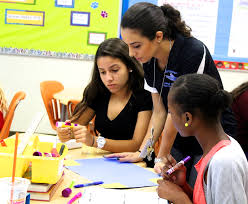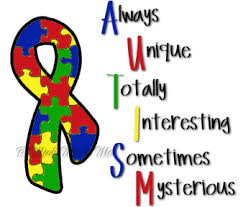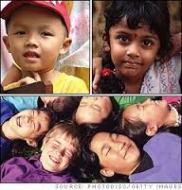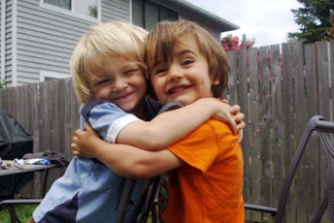In North Carolina regulation regarding childcare are developed and administered by Child Care Commission under the Division of Child Development and Early Education. I have had the privilege to speak before the Child Care Commission on more than one occasion. I remember the first time. I was extremely nervous to be giving my opinion to who were in my opinion those who were the ultimate authority in North Carolina when it came to child care.

“The NC Child Care Commission is made up of seventeen members: seven appointed by the Governor, five by the Speaker of the House of Representatives, and five by the President Pro Tempore of the Senate. The members include parents, child care providers, a pediatrician, early childhood education specialists and general citizens. Child Care Commission Members are appointed to serve two-year terms. Members may be reappointed and can serve up to 4 consecutive terms for a total of eight consecutive years. The Child Care Commission meetings are held quarterly, generally in Raleigh” (State).
I was dumbfounded to discover many individuals on the Commission did not know the regulations they were in charge of. While I acknowledge the unlikelihood that any one person would be familiar with ALL the regulations, the idea that those in charge of the regulations did not know many of the basics was mind bending.
As an administrator responsible for one center by North Carolina Regulations I am responsible for adhering to all North Carolina regulations. To do this I would obviously have to know these regulations. Given this is it not reasonable to expect the same from those in charge of making the regulations?
Although public forums are scheduled by the Child Care Commission to hear from the public in regards to any rule. The dates of these forums are posted on their website but as the majority of the public is not even aware of the website nor that the Commission exists it is not likely many will attend.
If the ‘rule makers’ had a better understanding of all the regulation it would eliminate some of the unnecessary and or redundant regulations. In addition a true collaboration between those working in the field, the families the programs serve and those making the rules would make a better environment for the children we serve.
A large portion of child care regulations focus on safety. While ensuring our youth is safe is good, there can be too much of a good thing. “Fundamental changes in workforce participation have mean that the majority of parents are now working and cannot be at home throughout the day when their children are very young” (Kagan & Kauerz, 2012). These children are spending a large amount of their time in a structured environment. Within these programs regulations require we keep them “safe”. The results are the children are not allowed to take risks. I think of my own childhood when we would climb trees and build forts. I can remember being as young as four and climbing a tree. Yes, I climbed higher than any adult would have allowed me. I took a risk. In fact I did this often. It was one of my favorite activities as a child. Children learn valuable lesson from taking risks. By taking risks, children learn the pleasure of success and the coping skills to conquer the frustrations of failure and the skills to persevere. Eppler-Wolff explains, “We know from both the research and looking at this generation that has been so overprotected, it’s certainly detrimental. If you can’t take risks, development is going to falter. You’ve got to get out of that place of comfort and complacency.” (Davis & Eppler-Wolff. 2009).
While we need to develop programs that keep children safe we need to work to develop them in such a way to allow our children to take risks. Children must be given a chance to engage freely in play so they can learn to evaluate their own skills. No one wants to see a child injured. We must remember that creating an environment that is overly safe can create a different kind of danger. Having children growing up in a risk-free environments can result in children that have little experience with risk-assessment. These skills are necessary for them to match their skills with the demands of the environment. As a result, many children have become very timid and are reluctant to take risks. Programs need to be developed that allow children experience taking risks AND remain safe. Working together early childhood professionals, parents and state officials can develop environments that do this.
Administering an early childhood program can be very isolating. As most program are operational for eleven or twelve hours a day, long days are typical for many administrators. As the person in charge the director often has no one to turn to when problems arise. For a new administrator this can be overwhelming. The same is also true for new teachers. Having a mentoring program can be a valuable resource for the new and experienced early childhood professional. “Mentoring programs offer new teachers and providers a practical and supportive way to learn and grow on the job. For experienced teachers and providers, mentoring programs create an opportunity to remain in the field and advance in their profession.” (Bellm, 1997).
Working with local agencies such as The North Carolina Partnership for Children and Smart Start in collaboration with the community colleges mentoring programs could be initiated throughout the state. As quoted in Kagan and Kauerz text Early Childhood Systems,” there is now ample evidence that “one-shot” workshops are generally ineffective, but that job-embedded professional development, especially individual technical assistance such as coaching and mentoring, mat predict improved teaching practices and child outcomes” (2012).
As an early childhood professional, my primary goal will be to continue improving the care our children are receiving. The three items above are a ‘tip of the iceburg’. While many programs are offering excellent care, we need all programs to offer the best possible environment for our children to thrive in. Every child deserves the best we are able to give.
Bellm, D. (1997). The Early Childhood Mentoring Curriculum: A Handbook for Mentors. National Center for the Early Childhood Work Force, 733 15th Street, NW, Suite 1037, Washington, DC 20005-2112; e-mail: mentor@ ncecw. org.
Davis, S., & Eppler-Wolff, N. (2009). Raising children who soar: A guide to healthy risk-taking in an uncertain world. Teachers College Press.
Kagan, S. L., & Kauerz, K. (Eds.). (2012). Early childhood systems: Transforming early learning. New York, NY: Teachers College Press.
 There are several communication skills that are important to embody when leading policy change. In the article, “The 7 Cs of Communication” Mind Tools describes seven communication skills. I have found two of these to be extremely helpful and important. When trying to convey a concept it is important to ensure your communication is concrete and coherent.
There are several communication skills that are important to embody when leading policy change. In the article, “The 7 Cs of Communication” Mind Tools describes seven communication skills. I have found two of these to be extremely helpful and important. When trying to convey a concept it is important to ensure your communication is concrete and coherent. Being coherent is just as important. “When your communication is coherent, it’s logical. All points are connected and relevant to the main topic, and the tone and flow of the text is consistent” (Mind Tools, 2013). As with being concrete, ensuring your communication is coherent allows your audience to know exactly what your point is. When trying to advocate for change the first most important goal is to educate others as to your mission. Your audience must understand your goal and why it is important.
Being coherent is just as important. “When your communication is coherent, it’s logical. All points are connected and relevant to the main topic, and the tone and flow of the text is consistent” (Mind Tools, 2013). As with being concrete, ensuring your communication is coherent allows your audience to know exactly what your point is. When trying to advocate for change the first most important goal is to educate others as to your mission. Your audience must understand your goal and why it is important. When taking the Communication Anxiety Inventory I was not surprised with the results. I suffer great anxiety when addressing a new group of people prior to the presentation. Once I get started I am fine and comfortable as long as I feel passionate about the subject I am speaking about. Passion about your subject matter is a key element to public speaking I learned from an instructor many many years ago. It was my first public speaking class and I was petrified at the idea of speaking in front of the class. As luck would have it I was assigned a topic I felt very strongly about. My mother had died a few months prior. After being resuscitated she was placed on life support. Although she had signed a “Do Not Resuscitate” order it was not noted in her chart. I was assigned the topic of the right to determine one’s own medical terms. As you can imagine I was very passionate about the topic. I got an A. Once I got in front of the group any and all anxiety was gone. My only thoughts were of convincing this group of people my important message. Passion can, however, get you in trouble and take you off track if you are not careful.
When taking the Communication Anxiety Inventory I was not surprised with the results. I suffer great anxiety when addressing a new group of people prior to the presentation. Once I get started I am fine and comfortable as long as I feel passionate about the subject I am speaking about. Passion about your subject matter is a key element to public speaking I learned from an instructor many many years ago. It was my first public speaking class and I was petrified at the idea of speaking in front of the class. As luck would have it I was assigned a topic I felt very strongly about. My mother had died a few months prior. After being resuscitated she was placed on life support. Although she had signed a “Do Not Resuscitate” order it was not noted in her chart. I was assigned the topic of the right to determine one’s own medical terms. As you can imagine I was very passionate about the topic. I got an A. Once I got in front of the group any and all anxiety was gone. My only thoughts were of convincing this group of people my important message. Passion can, however, get you in trouble and take you off track if you are not careful.



















